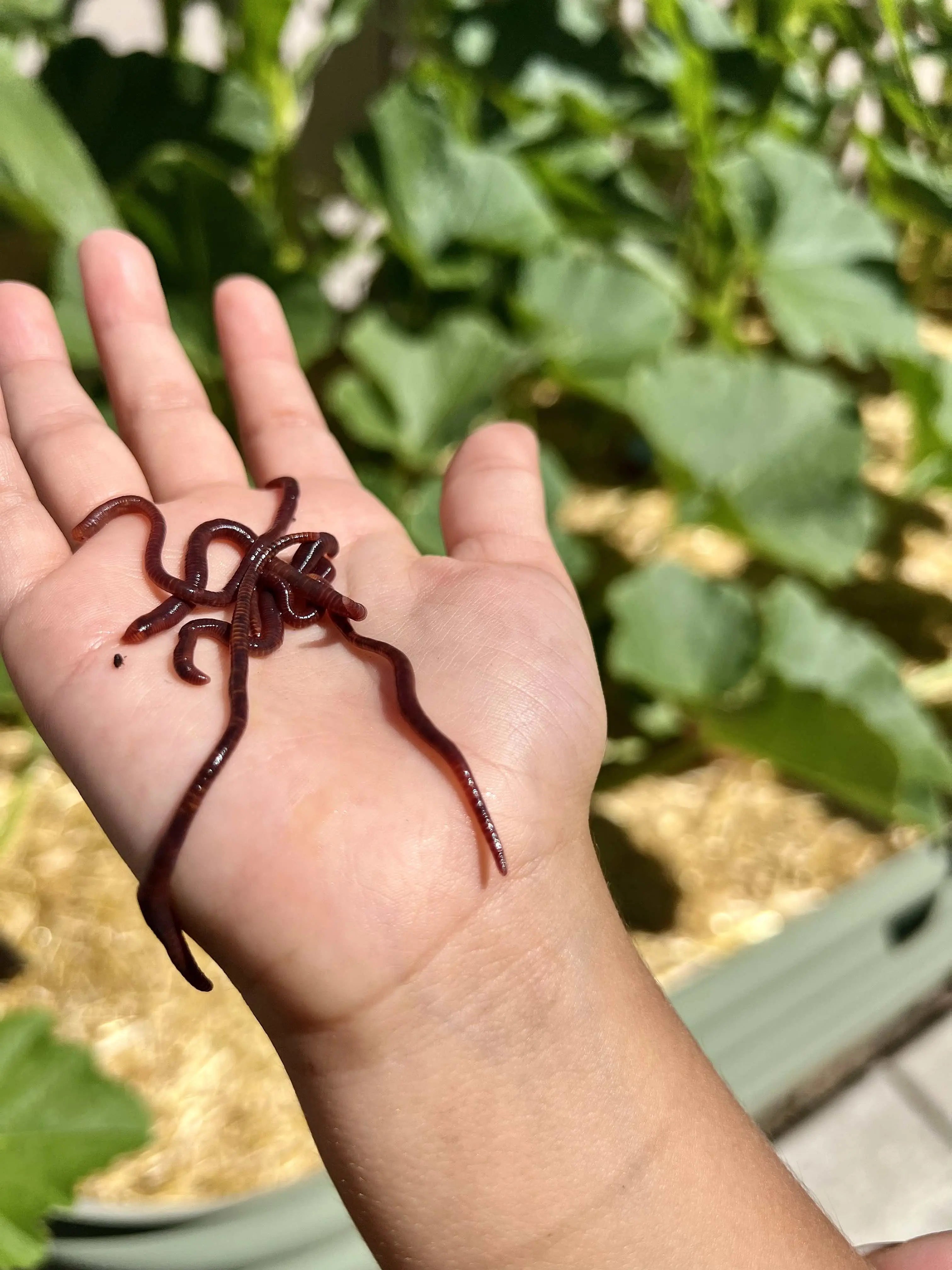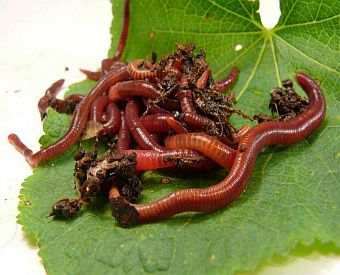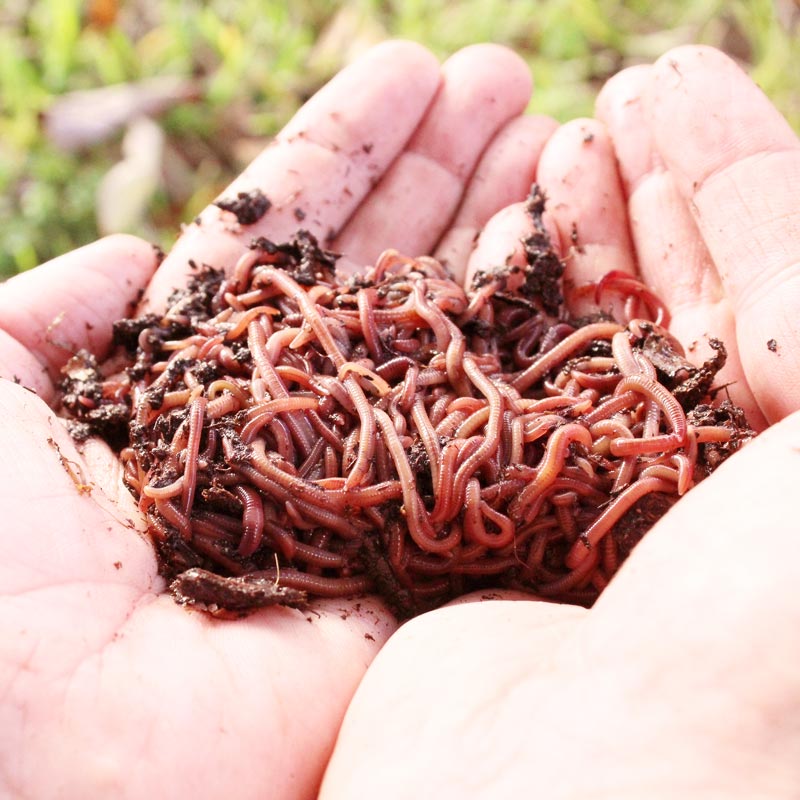Organic Composting with Red Wiggler Worms - Boost Your Garden's Growth
Organic Composting with Red Wiggler Worms - Boost Your Garden's Growth
Blog Article
Optimizing the Advantages of Red Wiggler Worms: A Comprehensive Guidebook for Home Gardeners and Urban Farmers
In the realm of lasting horticulture practices, red wiggler worms stand as unrecognized heroes, silently changing organic waste into nutrient-rich spreadings that can work wonders for dirt wellness. As home garden enthusiasts and metropolitan farmers increasingly seek eco pleasant and cost-efficient ways to improve their yards, the potential advantages of using the power of red wigglers can not be overstated. From reducing kitchen waste to cultivating much healthier plants, the application of these modest animals provides a plethora of benefits. By checking out the intricacies of how to efficiently take care of and make the most of the benefits of red wiggler worms, individuals can open a riches of chances for boosting the sustainability and performance of their horticulture undertakings.
Recognizing Red Wiggler Worms
Red Wiggler worms, renowned for their reliable composting capacities, are a species of earthworms widely utilized in vermiculture methods. These worms, clinically recognized as Eisenia fetida, prosper in rotting natural product, making them ideal prospects for composting.
One secret attribute of Red Wiggler worms is their reproductive rate. These hermaphroditic animals have both female and male reproductive organs, enabling them to duplicate rapidly under beneficial problems. A mature Red Wiggler can produce multiple spawn in a brief period, guaranteeing a constant population within a composting system.

Establishing a Worm Container
When developing a worm container for vermiculture functions, correct prep work and interest to detail are important for developing a favorable atmosphere for Red Wiggler worms. Begin by choosing an appropriate container for your worm bin.

Area the worm bin in an amazing, dark location away from direct sunshine and extreme temperature levels. By following these actions, you can set up a growing worm container that will successfully process organic waste right into nutrient-rich vermicompost for your yard.
Feeding and Keeping Worms
Making sure a well balanced and nourishing diet is important for the health and wellness and performance of Red Wiggler worms in a vermiculture system. It is crucial to prevent feeding them citrus fruits, onions, garlic, dairy products, meat, and oily foods as these can be unsafe to the worms or create unpleasant smells in the bin.
Appropriate moisture levels are also essential for the wellness of Red Wiggler worms. By carefully monitoring their diet regimen, wetness, and environmental problems, home garden enthusiasts and urban farmers can maintain a healthy and effective Red Wiggler worm populace for composting purposes.
Collecting Worm Castings
To efficiently remove nutrient-rich worm spreadings from the vermicompost, a systematic harvesting procedure is necessary for making best use of the composting benefits. Red Wiggler Worms. The very first step in collecting worm castings is to urge the worms to migrate away of the bin. This can be accomplished by placing fresh food scraps on one side and leaving the blog here opposite uninterrupted for a few days. When most of worms have actually moved to the side with fresh food, the spreadings can be collected from the contrary side.
After the castings have been gathered, it is very important to separate any kind of remaining worms from the spreadings to stay clear of damaging them during storage or application. One efficient approach is to develop conical piles of castings under brilliant light. Worms will intuitively relocate far from the light, allowing for easy separation and removal.
Finally, the collected worm castings should be stored in a great, dark, and completely dry area to keep their quality and effectiveness as a nutrient-rich soil amendment. By adhering to these actions, home garden enthusiasts and urban farmers can optimize the advantages of red wiggler worms in their vermicomposting systems.
Making Use Of Worm Castings in Horticulture
The unification of nutrient-rich worm spreadings right into yard dirt can dramatically boost plant development and total dirt health and wellness. Worm spreadings, likewise referred to as vermicast, are a natural fertilizer created by red wiggler worms as they break down raw material. These spreadings are abundant in necessary nutrients like nitrogen, phosphorus, potassium, and valuable germs that advertise plant growth and improve soil structure.
When utilizing worm spreadings in horticulture, it is crucial to blend them completely into the dirt or utilize them as a top dressing around plants. The slow-release nature of worm castings ensures a constant supply of nutrients to plants with time, minimizing the danger of nutrient leaching and promoting lasting dirt fertility. Additionally, worm spreadings assist improve dirt aeration, water retention, and microbial activity, developing a healthy environment for plant origins to flourish.

Verdict
Finally, the use of red wiggler worms in home horticulture and city farming can significantly benefit dirt wellness and plant development. By understanding exactly how to establish and keep a worm container, feed the worms correctly, and gather their nutrient-rich spreadings, gardeners can make visit site best use of the advantages of these earthworms. Incorporating worm castings into horticulture methods can boost dirt fertility and total plant performance. Overall, red wiggler worms provide a sustainable and efficient option for boosting yard and ranch returns.
In the realm of sustainable horticulture methods, red wiggler worms stand as unhonored heroes, quietly transforming organic waste into nutrient-rich spreadings that can function wonders for dirt health.When developing a worm bin for vermiculture objectives, proper prep work and attention to detail are essential for creating a conducive environment for Red Wiggler worms. The very first action in gathering worm spreadings is to urge the worms to migrate to one side of the bin. Worm spreadings, likewise recognized as vermicast, are a natural plant food generated by red wiggler worms as they damage down natural issue. By comprehending how to establish up and maintain a worm container, feed the worms correctly, and gather their nutrient-rich castings, gardeners can make the most of the benefits of these earthworms.
Report this page